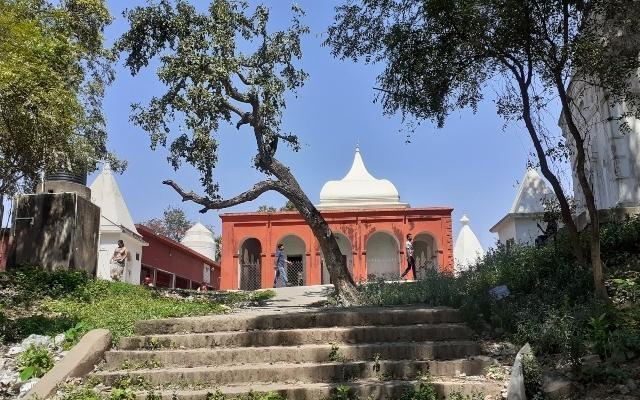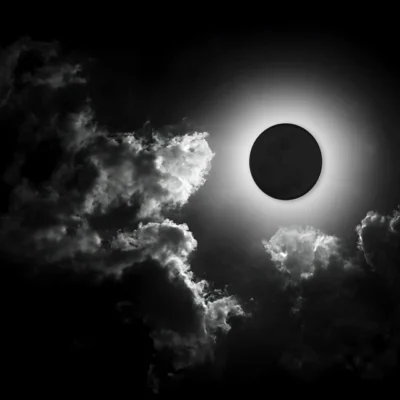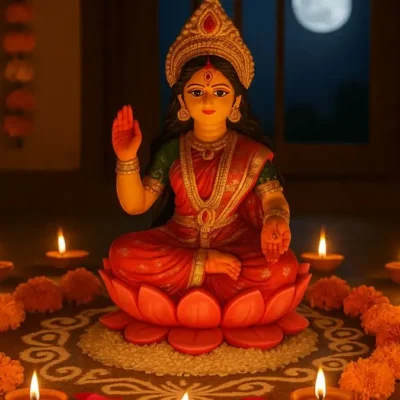Sri Kiriteswari Temple, West Bengal

Address
Sri Kiriteswari Temple, Kiriteshwari Road, Murshidabad district West Bengal 742104
Diety
Shakti: Vimla Bhairava: Sanwart Body part or ornament:Crown
Introduction
Kiriteswari Temple is the oldest, holiest, and a famous religious place of Murshidabad district and is also known by the name Mukuteshwari temple. It is located in Kiritkona village, near Lalbagh court road, in Murshidabad district, West Bengal.This is one of the major Shakti peethas among the 51. According to belief, the “crown” or the kirit of Sati Devi had fallen here. Here Devi is worshipped as Vimala or pure and Shiva as Sangbart or Sambarta. The Shakti Peet at MaaKiriteswari temple is considered as an Upapeeta, as no limb or part of the body fell here, but only a portion of her ornament fell here. It is one among the handful of temples in Bengal where no deities but an auspicious black stone is worshipped.
Puranic Significance
The construction of the temple is more than 1000 years old and this place was considered to be the sleeping place of Mahamaya. Local people call this temple as “MahishMardini” and this is the oldest mark of Architecture in Kiriteswari.MaaKiriteshwari temple was built by King Darpanarayana Roy during the 19th century. Yogendranaryan Roy, the late king of Lalgola had renovated and taken care of the temple built by Darpanarayan Roy. It is heard that the old temple was destroyed in 1405. It is said that MaaKiriteshwari was the presiding deity of the ruling house of Murshidabad. When the ruling families of Murshidabad capital were at the height of glory, Kiriteshwari Devi was worshipped by hundreds of devotees every day.
ANOTHER STORY OF SATI: In Hindu mythology, the son of Brahma, King Prajapati Daksha had a daughter named Sati.Princess Sati grew up adoring the legends and tales of Shiva, and when finally her age of getting married came, she knew it was only the ascetic Lord Shiva of Kailash where her heart and soul resided.Soon enough, Daksha’s daughter left her father’s luxuries and palace and began her meditation to win Shiva’s heart.She performed intense penance in dense forests and renounced food completely. When she finally pleased Shiva through her austerities, the lord of Kailash appeared in front of her and agreed to marry her. The legend goes that Sati and Shiva were happy in their marital bliss, but their marriage had not gone down too well with King Daksha, who considered ascetic Shiva nothing short of an uncouth lad who lives a hermit’s life not worthy of his daughter. So when Daksha organized a great yajna, he invited all the deities, gods and sages–but consciously excluded his son-in-law Shiva to insult him. Hurt by her father’s decision, Sati decided to visit her father and demand the reason for not inviting them. When she entered Daksha’s palace, she was bombarded with insults directed towards the Shiva.Haughty and proud King Prajapati Daksha called him all sorts of names right from a dishevelled god who hung out in graveyard to the supposed ‘lord of the beasts’. Unable to bear anything against her husband, a devastated Goddess Sati threw herself in the glowing scared fire of yajna.When Shiva’s attendants informed him about the demise of his wife, he grew enraged and created Veerbhadra from a lock of his hair. Veerbhadra created havoc in Daksha’s palace and killed him.Meanwhile, mourning his beloved soulmate’s death, Shiva tenderly held Sati’s body and started his dance of destruction (taandav). To save the universe and bring back Shiva’s sanity, Lord Vishnu cut Sati’s lifeless body using Sudharshan Chakra into 51 pieces.This is one of the major Shakti peethas among the 51. According to belief, the “crown” or the kirit of Sati Devi had fallen here.
Festivals
Festivals are held on the day of Durga Puja, Amavasya and Kali Puja. A special ritual is held during every new moon. Fruits and annabogh are offered to Goddess Kiriteshwari with the whole night yagna.Besides, the festivals, Kiriteshwari Fair is held every Tuesday and Saturday in the month of Poush (December-January) on the banks of River Bhagirathi with other special customs since the time of Darpanarayan. This fair attracts many pilgrims who bathe and offer prayers, as well as picnickers
Century/Period/Age
1000 years old
Nearest Bus Station
Dahapara
Nearest Railway Station
Dahapara
Nearest Airport
Kolkata









